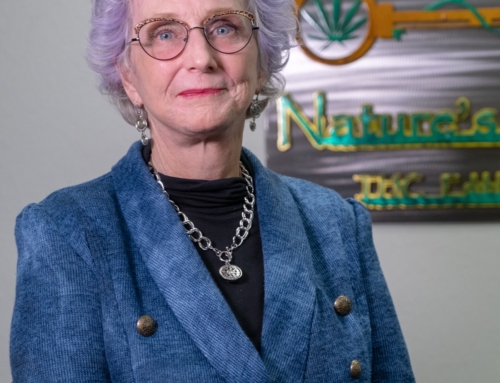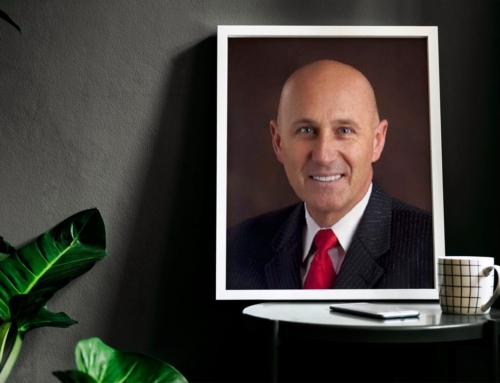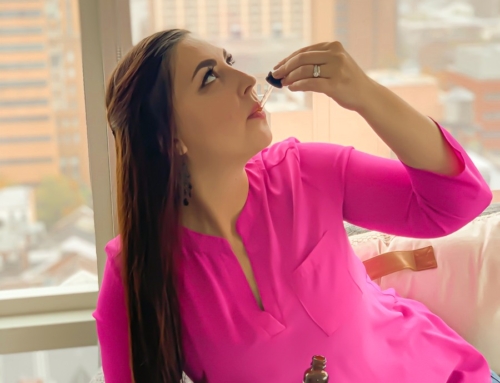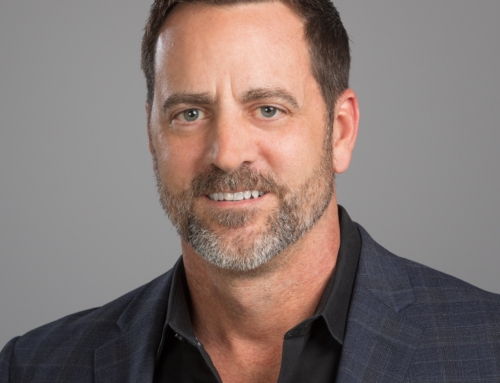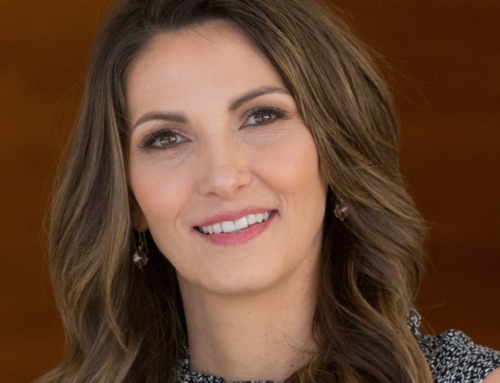I had the pleasure of interviewing Ramon Alarcon. Ramon is the founder and CEO of Witi (Wellness Insight Technologies, Inc.), a technology company bringing the connected-health revolution to botanical medicines. He previously served as VP of Engineering and Technology at blu, an e-cigarette company. He took blu from infancy to e-cig market maker and global #1 brand. He led his team through two big tobacco acquisitions, 20+ product launches, and growth to $250M in annual sales. He also built its portfolio of 80+ patents. Ramon has played a pivotal role in defining a new industry, setting industry standards for high-volume e-cig manufacturing at a global scale, and provided the FDA expertise to help shape regulations. He previously worked in VR at NASA, a pre-IPO computer device startup, vehicle tech at Ford, and has engineering degrees from Stanford. Ramon is a member of a number of industry and standards organizations, including the Cannabis Manufacturing Committee for the National Cannabis Industry Association and the UL Standards Technical Panel for e-cigarette battery safety.
Thank you for joining us! Can you tell me your background?
Growing up, when something broke, it was left to me to fix it. My parents were never particularly enthusiastic about DIY. I remember one time as a kid, I knocked the knobs off the gas stove. Rather than replace them, my dad’s solution was to use a pair of pliers for the next ten years.
I never blamed him though. At that time manuals were primarily written in English. My dad was a non-native speaker, having immigrated from central Mexico as a teenager.
Becoming the household “problem solver” was strangely formative. It changed my mindset to emphasize the importance of the user experience. It taught me that most things should be intuitive. You shouldn’t need to consult a manual. Instead, you should be able to figure something out with basic human ingenuity. This ethos ultimately became the drumbeat of my adult career.
While at Stanford University, I interned at NASA, where I developed technology for augmented reality displays for astronauts. This was in the early 1990s, long before the Google Glass or Microsoft HoloLens headsets. Shortly after, I worked for a startup called Immersion Corporation. During this time, I built simulators for novice surgeons that allowed them to get the “feel” of using endoscopes before ultimately using them on human patients.
Eventually I landed at blu, where I held the title of vice president of engineering. blu — which is now owned by Imperial Brands — was the leader in the e-cig market. I led a team of stellar innovators through two big tobacco acquisitions, 20+ product launches, and helped the company grow to $250M in annual sales. During that time, I witnessed the rise of AI and machine learning and a slow creep towards the legalization of marijuana.
This concept was simultaneously exciting and concerning. Due to prohibition, I was concerned about the scarcity of scientific data around the hundreds of active compounds in cannabis, as well as a lack of awareness when it comes to dosing. As the Cannabis industry moved out of the shadows, I worried the general public would ultimately end up consuming products they didn’t understand.
The company I’m building today, Witi, addresses this very problem.
Can you share the most interesting story that happened to you since you began leading your company?
This story takes place a short while after I decided to build Witi, in 2018. While we were making significant progress with our initial mission of building a better, safer 2.0 vaporizer, we had yet to invent what would become our “killer app” — Dose-to-Effect technology™.
One night, my wife had tickets to watch Brandi Carlisle at the Mountain Winery in Saratoga, California. I figured I wouldn’t be into it, so before we went through security, I took a few hits of a THC vape pen to “enhance” the experience. It worked!
By the time Carlisle was playing “Harder to Forgive,” I was completely immersed. It was like my head was in-tune with everything going around me. The stage lighting felt luscious and vivid, and I felt as though I could slow time and hear every note being played. It was an incredible and genuinely touching experience.
More importantly however, I felt in-control. I wasn’t intoxicated — far from it. Somehow, I’d taken the precise dose to get the effect I wanted. This experience led me to think about how I could repeat this sensation. How could I track, learn and repeat what worked for me?. It was this moment that inspired , Witi’s Dose-to-Effect technology, which is now the cornerstone of our business.
Can you share a story about the funniest mistake you made when you were first starting? Can you tell us what lesson you learned from that?
It’s more of a physical comedy than a truly funny story. Like any startup, Witi started life with minimal runway capital. I’ve always believed it’s prudent to be efficient with the money you have. We’re not one of those startups that wastes vast sums of cash on ridiculous perks and fancy offices. That said, there’s a line between frugality and being smart with money. When we moved into our first office, we were lucky enough to have friends in another company that was downsizing, who offered us their old furniture. The only “catch” was that we had to move it ourselves — a reasonable exchange, I thought.
So, I rented a U-Haul and picked up the stuff, along with my son and another employee. That was the easy part.
I quickly realized that moving is a task I was much better suited for when I was in my twenties, a very specific skill — one that I don’t have. We had to move bulky and heavy items — like chairs and desks — through elevators that snapped shut every ten seconds. We were continually trying to avoid triggering the alarm, which would have resulted in security rushing to the office, potentially landing us with a fine. To make matters worse, when we started moving the upholstered furniture, the heavens opened and a downpour erupted.
Eventually, we got everything in — some items wetter than others. The real punishment happened the following week, when the aches and pains set in (but nothing that Care by Design’s CBD Pain Cream 1:1 couldn’t help with…!).
We saved money by not using a professional moving company, but was it worth it? I don’t think so. The whole experience dented our productivity for several days afterwards. Ultimately, this episode taught me the importance of spending money when it makes sense.
Are you working on any exciting projects now?
Two, in fact! The first is Witi’s inaugural cannabis vaporizing product, set to launch in 2020. While there are plenty of cannabis vape pens on the market, ours is perhaps the smartest.
Our focus is on helping people have the healthiest possible relationship with their cannabis vaporizer. We have built-in authentication that prevents unauthorized users — like children — from using it. It comes with an integrated touch screen, and we emphasize an individual’s dosing needs rather than a one-size fits most mentality. So, via our Dose-to-Effect technology, you can ensure you’re getting the appropriate “hit.”
Secondly, we recently announced a partnership with Perrigo, a major multinational pharmaceutical company, to license Witi’s patent-pending hardware and software IP in development of a new, inventive smoking cessation product. The two companies will work together to develop an Electronic Nicotine Delivery System (ENDS), that if successful, would be submitted for approval by the U.S. Food and Drug Administration (FDA) and other international regulatory agencies.
As I mentioned, I worked at blu before setting up Witi, and I’ve seen the challenges that e-cigarettes have brought to market, the primary focus being to move people away from combustible tobacco, and to help people stop their nicotine habit altogether. Our most recent partnership with Perrigo reinforces what our technology has the power to do across multiple markets. Perrigo has an established portfolio of EU-leading NRT products, they know the space and knew there was room for a new product that would not just curb cravings, but actually help smokers quit. Through diligent review, they found us, saw how our approach to the upcoming 2020 launch in the cannabis market was different, and agreed to license Witi’s IP/technology for a different use case — nicotine cessation. This uses our dose-to-effect technology to respond to the individual user’s needs. So for example, if their cravings spike, we can give them just enough nicotine to prevent them from lighting up another cigarette.
None of us are able to achieve success without some help along the way. Is there a particular person who you are grateful towards who helped get you to where you are? Can you share a story?
I owe so much to my wife, Gretchen. As an experienced technology executive, she has been an unquenchable source of support, she’s one of my go-to’s for kicking strategic tires and guidance. While taking weeks to heal a stress fracture in her foot, she facilitated our first team offsite (in our home!), where we gathered our team together to solidify our corporate strategy, and align our strategic roadmap and core differentiators for launch of our MVP. I guess you could say it gave us a leg-up — and proved she can handle most anything thrown at her. Both traits being necessary at a seed stage startup.
Can you share 3 things that most excites you about the Cannabis industry? Can you share 3 things that most concern you?
There’s a lot that excites me about the cannabis industry. Sometimes it makes me feel like a pioneer. After decades of prohibition, cannabis is finally entering the legal mainstream. From a scientific perspective, there’s so much to learn. That is incredibly exciting. In some ways, I feel like a kid in a candy store.
But above that, I’m excited to see how the industry can use cannabis to help people. Cannabis is known to reduce pain and soothe specific ailments, like anxiety and depression, but we’re really just scratching the surface. Much of the work in the coming years will focus on figuring out the appropriate doses, combinations and indications.
Finally, cannabis can bring joy to people. I think part of the industry’s job is to reduce the stigma surrounding this herb and make it safer to enjoy.
To be clear however, some areas do give me cause for concern. The gold rush surrounding cannabis has the potential to attract bad actors, who will introduce products into the market with little care for quality or public safety.
Almost as worrying are the unsophisticated actors, who may have the best intentions but inevitably will face the same outcomes. Any cannabis product consumed by the wider public ought to be rooted in science and have rigorous quality controls. I worry about new actors who might tarnish this fledgling industry with substandard products, even if their hearts are in the right place.
Finally, I’ve got the general jitters that come with being at the forefront of any new industry. The potential to help people is enormous, but there’s still so much to learn. If the collective ‘we’ mess this up, we’ll struggle to build long-term customers that are essential for this industry’s survival. There’s only one chance to make a first impression, and our industry must take a measured approach. We desperately need to avoid overpromising and under-delivering.
Can you share your “5 Things I Wish Someone Told Me Before I Started Leading a Cannabis Business”? Please share a story or an example for each.
● The Industry is not Just Hiring Experts in the Industry. Unlike other industries where there’s a more common baseline of technical understanding, practices and terminology, the cannabis market is more nascent. This is something you have to be aware of when onboarding talent. The majority of my team, for example, came with me from blu and have a deep understanding of vaporizer design. So when I speak about our wick-less design, I know they understand just how differentiated that is. But this isn’t the case with all members of the Witi team. My co-founder and CMO Erika, for example, came from an entirely different sector within the tech world, and has been integral in helping us shape and define the overall vision of the company.
Bringing on new team members in Cannabis requires more than the typical HR on-boarding kit, you’ve got to find a way to ensure you’re all speaking the same language and are aware of the nuances in the space and how you differentiate. It’s tricky, but when you hire people with a passion for your product and for our industry, you can translate, untangle and solve it together with exponential success.
● The Marathon of Raising Capital. The cannabis sector attracted over $1.3 billion in the first six months of this year. The reality is that raising money in this sector is a marathon, not a sprint. It’s important to thoroughly think through investment decisions, particularly while your company is in its most formative stages. Although capital can act as an accelerant, it can distract from your initial vision. Sometimes, it’s better to take things slow; get the right investors through the door that believe and can help shape your vision. After all, collaboration is key to success.
● Know Your [investor] Audience. Approaching an investor, whether it’s friends and family or a venture capital fund, means putting together a condensed version of your vision into an investor pitch deck to help state your case. The demand for cannabis and cannabis products is limitless. But the reality is that your business cannot serve every cannabis user without diluting focus.
When pitching to investors, you must have a compelling pitch deck that you believe in. Cut the jargon. Be real. And tell a good story.
A story well told, connects. The final step before every pitch is to do your homework on them. Cannabis Investors to Silicon Valley Tech Investors — prep to understand their lens, their appetite, how you can make your story relatable and pull on their heartstrings. Behavioral economists say only 20% of economic decision making is rational, 80% is emotional.
● Think Beyond the Cannabis Market. This applies beyond the cannabis sector, but you need to pitch to the heart and the gut, not just the head. It sometimes feels like your origin story is just as important as your revenue projections.
● Be Confident in That You Own a Cannabis Company. Don’t be shy about telling your friends and former colleagues that you have a cannabis company; own it. Early on in my venture, I would orchestrate conversations carefully to feel out where people stood on the subject before going too far. Now I just cut to the chase; it’s far more efficient. It’s refreshing to see how many people get it. I remember spending five minutes beating around the bush with a former colleague who I wanted to hire, only to find out that he too worked for a cannabis company. Now he’s part of our sales staff.
What advice would you give to other CEOs or founders to help their employees to thrive?
Communication is key. Sure, this is a cliché, but it’s also true. Leadership roles are draining and often lonely. This can build barriers between yourself and the rest of your team. It’s important for your partners, co-founders and employees to know what you’re doing and why. After all, they too have invested in your vision.
Also, don’t ignore culture, and don’t hesitate to build it. Culture defines how your team works. It will help you stay nimble. It will help you craft your public image. Culture will make you more compelling to investors and customers alike. Ultimately, culture is part of your brand. Don’t forget that.
Thank you for all of these great insights!



